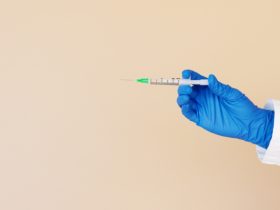By March this year, more than half of the Czech adult population had been exposed to SARS-CoV-2. The results of the PROSECO study, led by researchers from the RECETOX center at the Faculty of Science of Masaryk University in Brno, show that more than half of the population has taken part in the study. The number of infected people increased significantly in the second wave of the coronavirus spread, which started last year after the holidays. The study was announced today by university spokesman Pavel Žára.
“The results of the first phase of the study showed a rapid increase in seropositivity, demonstrating widespread exposure of the Czech population to SARS-CoV-2 during the dramatically ongoing second wave of the pandemic: while only 28 percent of volunteers had the monitored antibodies in October and November 2020, it was 43 percent in December 2020 and January 2021, and 51 percent in February and March 2021,” said immunologist Vojtěch Thon of Masaryk University.
The Health Ministry currently records about 1.68 million confirmed cases of the new coronavirus, about 17 percent of the population. The statistics do not include those who have had an infection without symptoms or a mild course and never got tested. The actual number of people who have become infected and developed antibodies can be estimated from a national seroprevalence study. A representative sample of the population is tested for the presence of antibodies.
The PROSECO study was made possible by the Health Insurance Fund of the Ministry of the Interior of the Czech Republic, which supported the repeated measurement of antibodies to SARS-CoV-2 in the blood of volunteer clients from its prevention fund.
The study’s first phase began in October 2020, and the recruitment of participants ended in March 2021 before the start of the massive vaccination campaign. More than 30,000 participants over 18 had their blood samples taken and antibody levels measured at a network of accredited laboratories.
In addition to RECETOX staff, epidemiologists from University College London, the World Health Organization’s office in the Czech Republic, and the Institute of Health Information and Statistics (IHIS) were involved in analyzing and interpreting the data.
The measured data indicates that the percentage of the population exposed to the SARS-CoV-2 virus by March 2021 was significantly higher than would result from direct estimates based on PCR testing data alone, said Ladislav Dušek, director of the Institute of Health Information Services. The study has two follow-up phases to monitor the persistence or decline in levels of memory IgG antibodies to SARS-CoV-2 in people who have had an infection and those who are vaccinated.










Leave a Reply